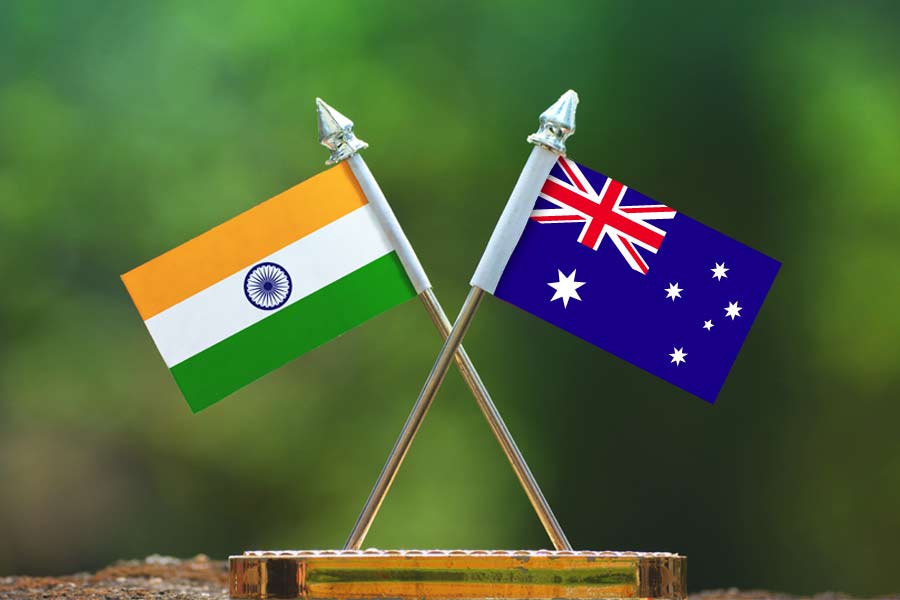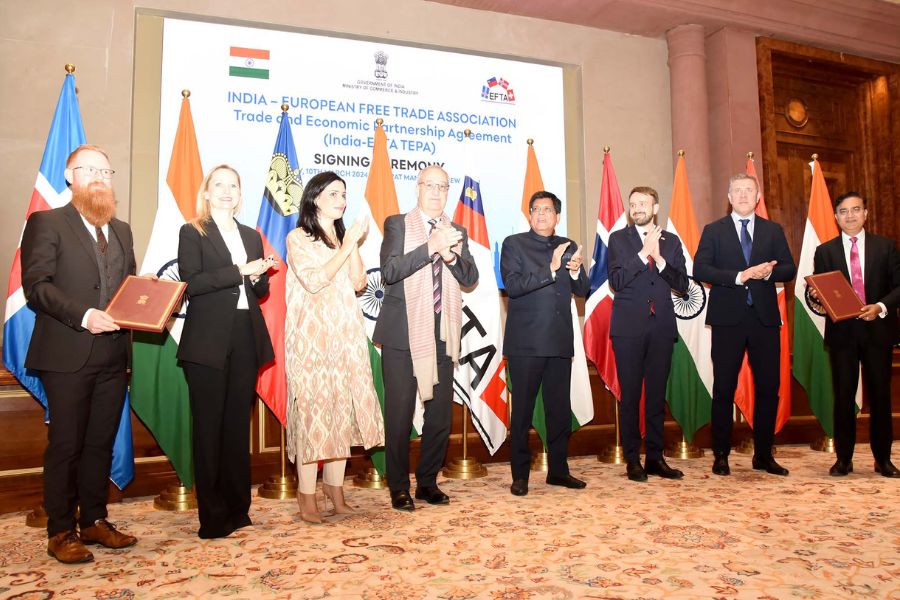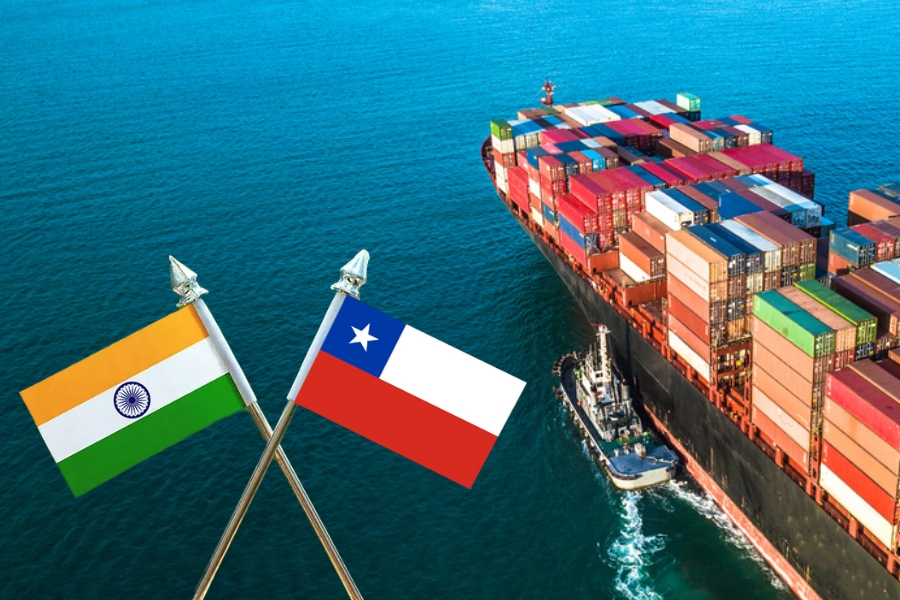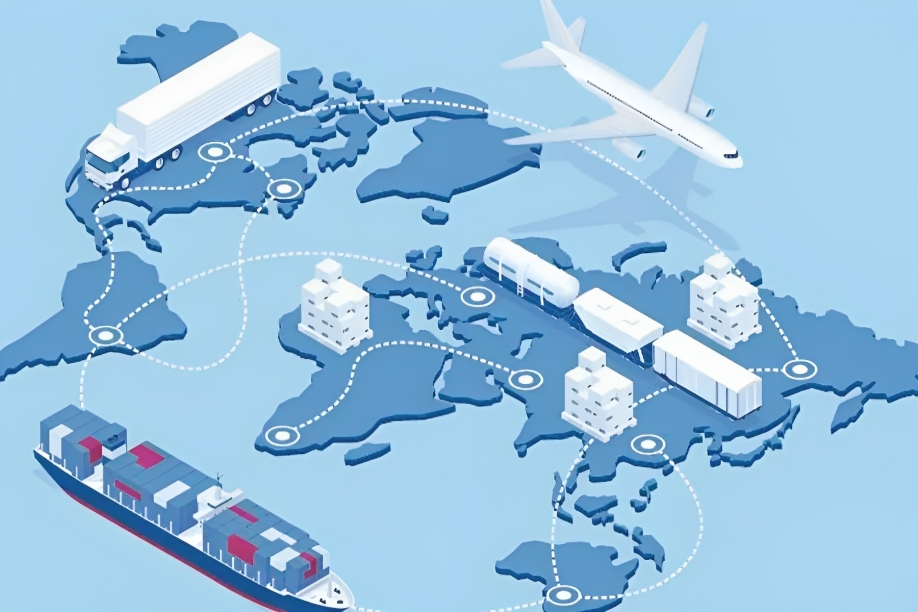India-Australia ECTA promises world of opportunities
The landmark trade agreement between India and Australia cleared on 22nd November 2022, came into force on December 29, 2022. The agreement is expected to double the bilateral trade to $45-50 billion in next five years. The Free Trade Agreement (FTA) would provide duty-free access to Indian exporters of over 6,000 sectors including textiles, agri products, leather, furniture, jewellery and machinery in the Australian market.

Image credit: Shutterstock
The India-Australia FTA signed on 2nd April 2022, came into force today, i.e December 29, 2022. The FTA will provide duty free access to 96.4% of exports to Australian market, benefitting over 6,000 broad sectors of India.
In 2021-22, India’s goods exports to Australia were $8.3 billion and exports were $16.75 billion. The pact aims to double bilateral trade to US$ 45-50 billion in next five years. Since 95% of India’s imports from Australia are raw materials and mining products, India’s MSME manufacturers are more likely to benefit from the agreement. Additionally, there is a pool of opportunities for cooperation between the two countries in a number of crucial fields like space and defence, cyber technology, water resources etc.
Addressing industry representatives and the media in Mumbai today, the Union Commerce and Industry Minister Piyush Goyal said that the agreement has been “negotiated with the speed of Bret Lee and the perfection of Sachin Tendulkar”.
With the commencement of the India-Australia Economic Cooperation and Trade Agreement (ECTA), the Indian government has started reaching out to the exporters of apparel, chemicals, gems and Jewellery among others. The objective is to help these sectors take advantage of the duty concessions offered by this agreement.
The ECTA projects various benefits for India, some of which are listed below:
- Sectors including furniture, Jewellery, leather along with labor-intensive sectors like Textiles and Apparel, a few agricultural and fish products, machinery etc. will record impressive surge in exports.
- It ensures the creation of over ten lakh jobs in various sectors in the next five years.
- The agreement will eliminate the Double taxation on IT services which is currently making India less competitive and less profitable in IT sector and will create a lot many jobs in the field.
- The ECTA offers a higher value addition of 35% to specify the country of origin to avoid interference from other countries. An official said, “We expect gains in many sectors where China, Vietnam and Bangladesh enjoy zero-duty access in Australia”.
- Indian textiles and apparel exports to Australia are expected to reach US$ 1.1 billion from US$ 0.5 billion in the next three years.
- The India-Australia ECTA is expected to support tourism and workforce needs in regional Australia by making 1,000 work and holiday programme places available to young Indians.
- The deal will create opportunities for Indian students graduating in Australia to undertake post-study work, with a bonus year of stay for high-performing STEM (science, technology, engineering or mathematics) graduates.
Applauding the agreement, Rajesh Agrawal, Additional Secretary, Department of Commerce announced, “The India-Australia ECTA is one of its kind, and will open up more such opportunities in future. This will pave the way for a win-win solution for both the countries”.
Think Tank Global Trade Research Initiative expects the India-Australia bilateral trade (in merchandise and services) to cross $70 billion in next five years due to buoyant trade relations and Australia’s gradual distancing from China. Similarly, the FTA will offer a number of benefits to Australian companies and consumers. Some of these are listed below:
- Tariffs on 85% of Australia’s exports to India will be eliminated and high tariffs on a further 5% of goods will be phased down.
- The ECTA will save Australian exporters around US$ 2 billion a year in tariffs, whereas consumers and businesses will save around US$ 500 million in tariffs on imports of finished goods, and inputs to our manufacturing sector.
- Australian exporters will have Indian access on products like critical minerals, pharmaceuticals, cosmetics, lentils, wine etc.
- Australian services suppliers will benefit from full or partial access to more than 85 Indian services sectors and subsectors.
From India’s perspective, this deal is important, as it marks a trade agreement with a developed country after a very long time. With this pact in force, India aims to engage in FTAs and CEPAs with other key trading nations in future, including EU, UK, Canada, GCC and Israel.













Nice and informative article
It’s a great opportunity for both countries.